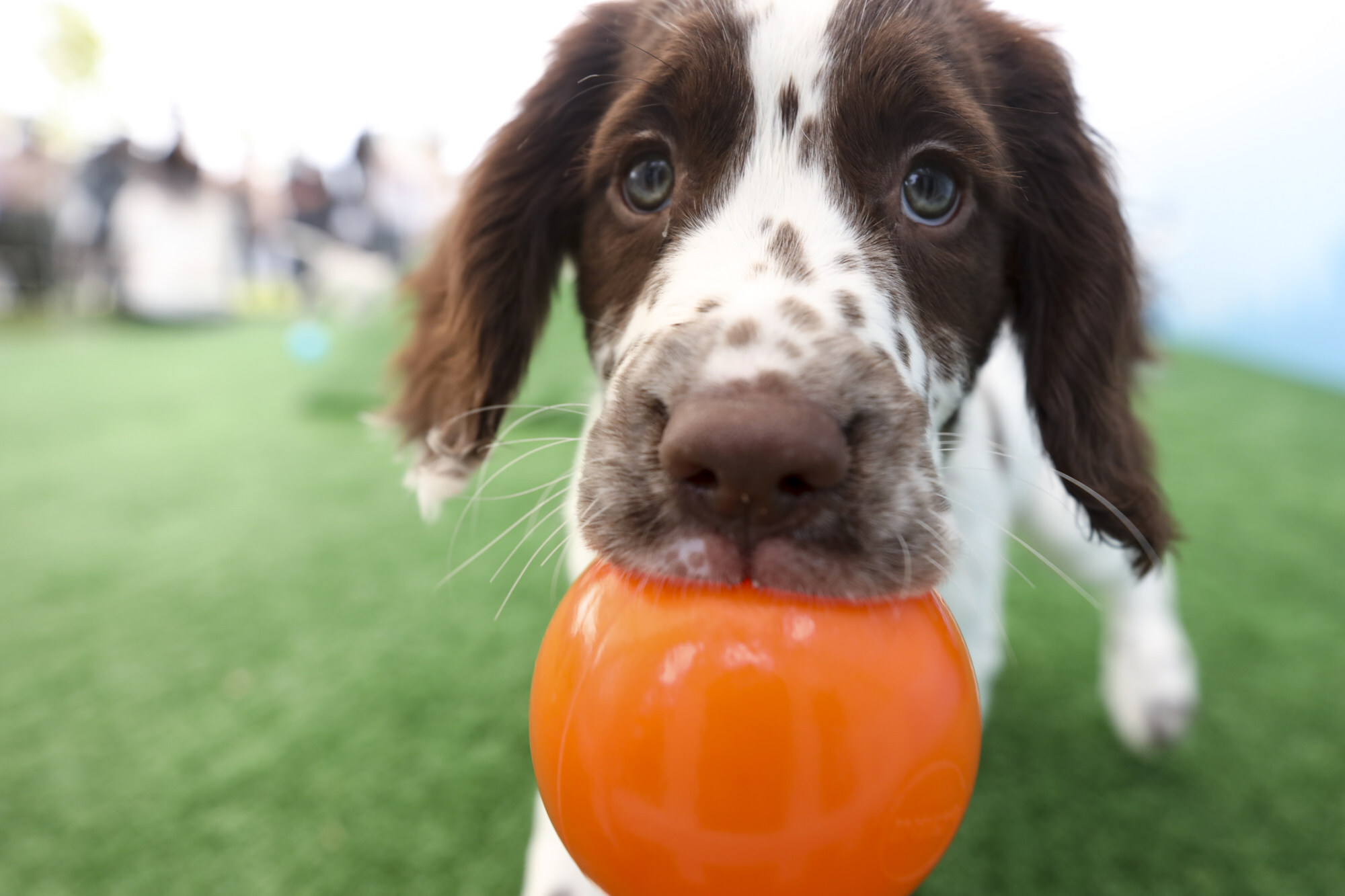
Six locally bred puppies train to join Hong Kong’s disciplined services by next year, as authorities stop importing dogs from overseas amid Covid-19 pandemic
- The English springer spaniels are the result of the first joint dog breeding programme between the customs and fire service departments
- Mother of puppies is a drug detection dog with customs, while her mate assists in search and rescue
A new batch of six locally bred puppies will follow in the footsteps of their parents and continue their legacy in government service, joining the “sniffer force” under two disciplined units by early next year.
The six English springer spaniels, three females and three males born in the same litter on the first day of the Year of the Ox, are the result of the first joint dog breeding programme between the customs and fire service departments. They are the offspring of two canines still serving with each agency.
The two departments had stopped importing dogs from overseas due to the Covid-19 pandemic, said Ma Siu Fong, customs’ deputy head of Land Boundary Command (Customs Canine Force).

“Both departments have a strong demand for either rescue and search dogs or detection dogs,” Ma said. “And both departments have been using Springer spaniels, so we launched this joint breeding programme.”
The puppies are named Farris, Uma, Taco, Umi, Raisa and Effie – with the initials together forming the word “future” – as they bear the expectations of carrying on their parents’ missions in the days ahead.
Dog shelter close to financial collapse, leaving fate of 130 animals unknown as pandemic continues to take its toll
With a great demand for detection dogs, customs has been exploring local breeding programmes, including the ones in collaboration with other organisations. The mum of the “future” puppies, four-year-old drug detection dog Casa, was born in the 2016 breeding programme between customs and the Correctional Services Department.

Imported from Britain, her mate, Jack, is a five-year-old search and rescue dog serving the Fire Services Department. The dog helps firefighters search for missing people.
Jack and Casa met each other last December, and successfully mated after several attempts.
“This was the first time that Jack joined a breeding programme, so he was a little bit shy at first, but thanks to the efforts of our colleagues, Jack and Casa were able to bond with each other emotionally,” said Eric Law Man-kit, senior station officer of the Fire Services Department.
The puppies are currently undergoing basic social and sensory training at the Customs Canine Force’s Hong Kong-Zhuhai-Macau Mega Bridge Operational Base.
Four of them will follow their mum and join customs in helping to intercept drugs, explosives and cash at the airport and other checkpoints when they turn one year old, after a formal training for 10 to 12 weeks.
She sold two village homes, jewellery, to run Hong Kong Homeless Dog Shelter
The other two will be sent to the Fire Services Department for further training when they turn four months old, so they become rescue dogs.
To maintain a stable source and high quality of the canine force, the two departments may continue to breed more dogs locally depending on practical needs, while still importing dogs from overseas in the future.
Hong Kong customs currently has 70 detector dogs, and the Fire Services Department has six – including three each for search and rescue, and fire investigation.

